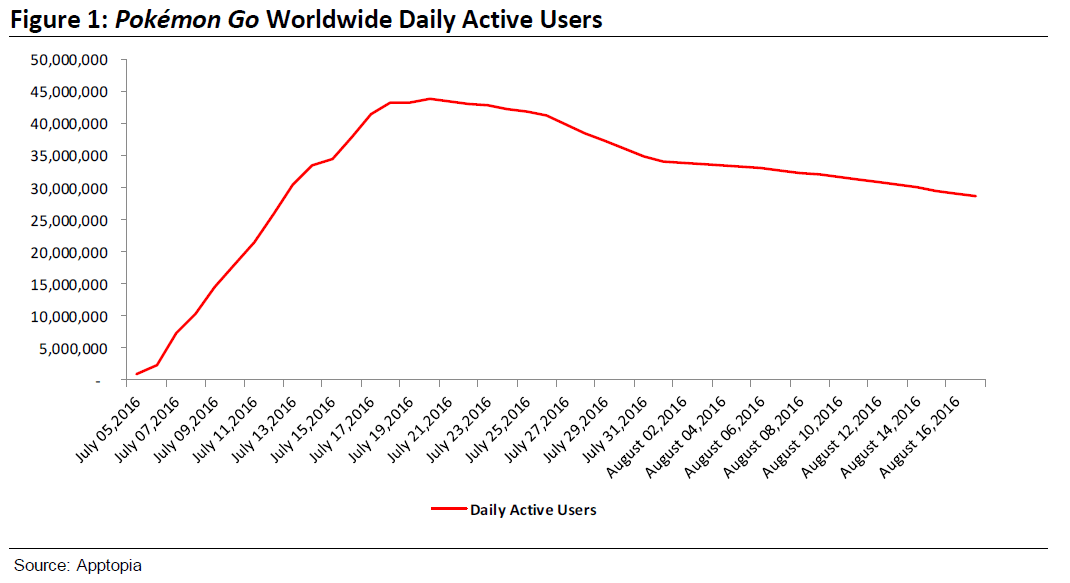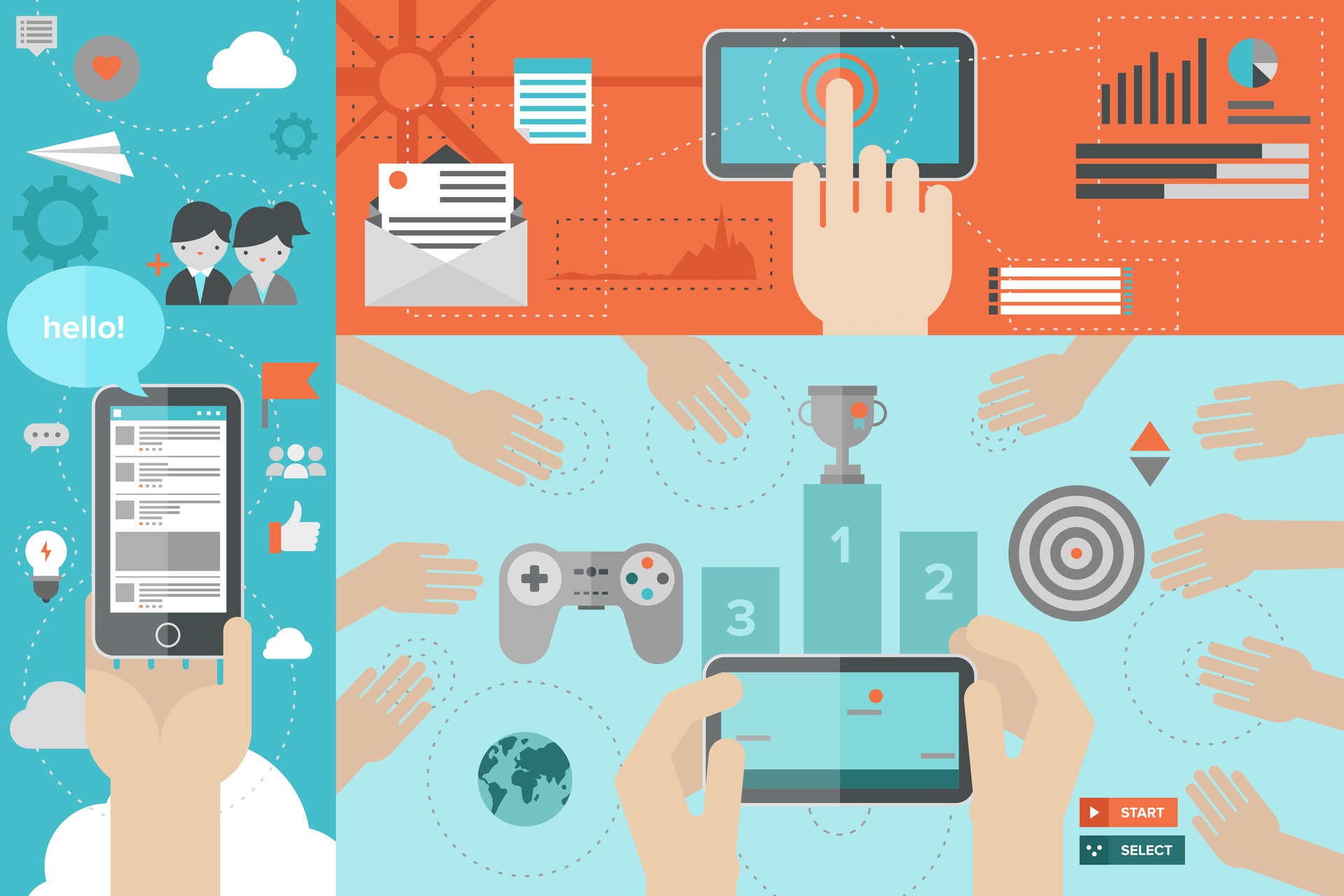Gamification Of Learning: What Can We Learn From Pokémon GO?
Since the launch of Pokémon GO last July, I’ve read numerous blog posts explaining how the sudden popularity of the mobile game was a proof that gamification actually works. Amongst the most common arguments was the fact that the game was encouraging users to be active and to get out of the house and walk around the neighborhood in order to be rewarded by capturing a Pokémon. And the more you get, the more levels you unlock and the higher your profile gets ranked. According to many observers, the craze created by Pokémon GO was a proof that games are engaging and can motivate people. Otherwise, why would people play them? But despite the apparent success of Pokémon GO, we can observe, almost 3 months after its launch, that this success was quite relative and short lived. Here are a few takeaways from the Pokémon Go experience and what can teach us about the gamification of learning.
1. Gamification Only Motivates For A While
When you look at Pokémon GO historical usage data, you can clearly see that, like any other game, its success was mostly due to a combination of a novelty effect and a viral marketing campaign. But the fact is that only two weeks after its launch, Pokémon GO usage was already in decline and the declining rate has almost been constant since (fig. 1).

This kind of decrease in motivation has been observed in studies on gamification of learning. Among others, Hanus and Fox (2015) found that students in a gamified course showed less motivation, satisfaction, and empowerment over time than those in a non-gamified class. They even suggest that, at best, the addition of game mechanics do not improve educational outcomes and at worst can harm motivation, satisfaction, and empowerment.
2. Gamification Does Not Appeal To Everyone
Even at its peak, Pokémon GO had around 40 million active users. This is only a very small fraction of smart phone owners. Even if it was all over the social and mass media, the majority didn’t even bother to look at the game. Why didn’t they, if it was so popular?
Not everyone is a gamer. In fact, some people don't even like to game. When it comes to gamification of learning, Hamari (2013) found that only a relatively small portion of gamified learning users became interested in game elements and could not demonstrate that mere implementation of gamification is effective in encouraging overall user behavior.
3. Gamification Is Good For Marketing, But Can Have Negative Effect On Learning
Even if usage is in constant decline, Pokémon GO can be considered as a marketing success. Even if only a small portion of users actually performed in-app purchases, the publisher collected millions of dollars since it launched. But how does this relate to gamification of learning?
According to Campbell (2011), game designers, researchers, and even companies like Pepsi, IBM, and Nike are staging a broad effort to gamify parts of our lives that previously have been impossible to play. Gamifying your life, they say, could help you learn new skills, connect with others, and become fitter, happier and healthier. Bénabou and Tirole (2003) recognize that gamification is great for commercialization and influencing buying habits, but it can be disastrous for motivating students to want to learn. In business, if only 10% of the people who access gamified marketing content end up buying the product, it can be considered a success. But in the learning context, having only 10% of learners achieving the objective is a failure.
Conclusion
While games such as Pokémon GO may have the power to mobilize masses of people, it remains that these masses are only a minority of the population. Furthermore, these mass movements are, more than often, short lived as they quickly fade as the sense of novelty goes away. As learning professionals, we need to understand that the objective of these games is not for the player to complete the game, but to keep them playing as long as possible so they keep spending money. This is why developers make these games harder as you progress so you feel compelled to buy tools that will help you progress faster. They know that some will leave the boat but as long as they can keep even a small amount of users paying for virtual stuff, they make money.
Who would apply such logic to learning? Isn’t it what gamification brings to learning: Making the container more appealing, so people will find it fun to complete? Then what happens when learners get bored of badges that give them nothing? When they constantly find themselves at the bottom of the leaderboard? When they keep failing at unlocking the next lesson? How does this motivate them to go further?
References:
- Bénabou, R. and Tirole, J. (2003). Intrinsic and Extrinsic Motivation. The Review of Economic Studies, Vol. 70, No. 3 (Jul., 2003), pp. 489-520.
- Campbell, M. (2011). The Audacious Plan To Make The World Into A Game. The New Scientist, Vol.209, Issue 2794.
- Hamari, J. (2013). Transforming Homo Economicus Into Homo Ludens: A Field Experiment On Gamification In A Utilitarian Peer-To-Peer Trading Service. Electronic Commerce Research and Applications, 12. doi: 10.1016/j.elerap.2013.01.004
- Hanus, M.D., Fox, J. (2015) Assessing The Effects Of Gamification In The Classroom: A Longitudinal Study On Intrinsic Motivation, Social Comparison, Satisfaction, Effort, And Academic Performance. Computers & Education 80 (2015) 152-161
- Kawa, L. & Katz, L. (2016). These Charts Show That Pokemon Go Is Already In Decline. Bloomberg Market. August 22, 2016.








